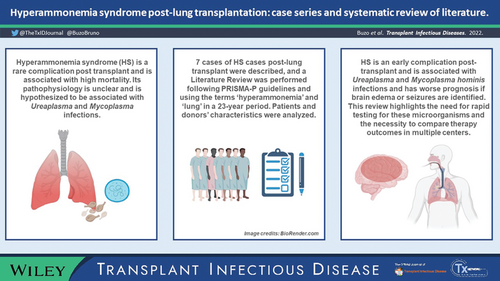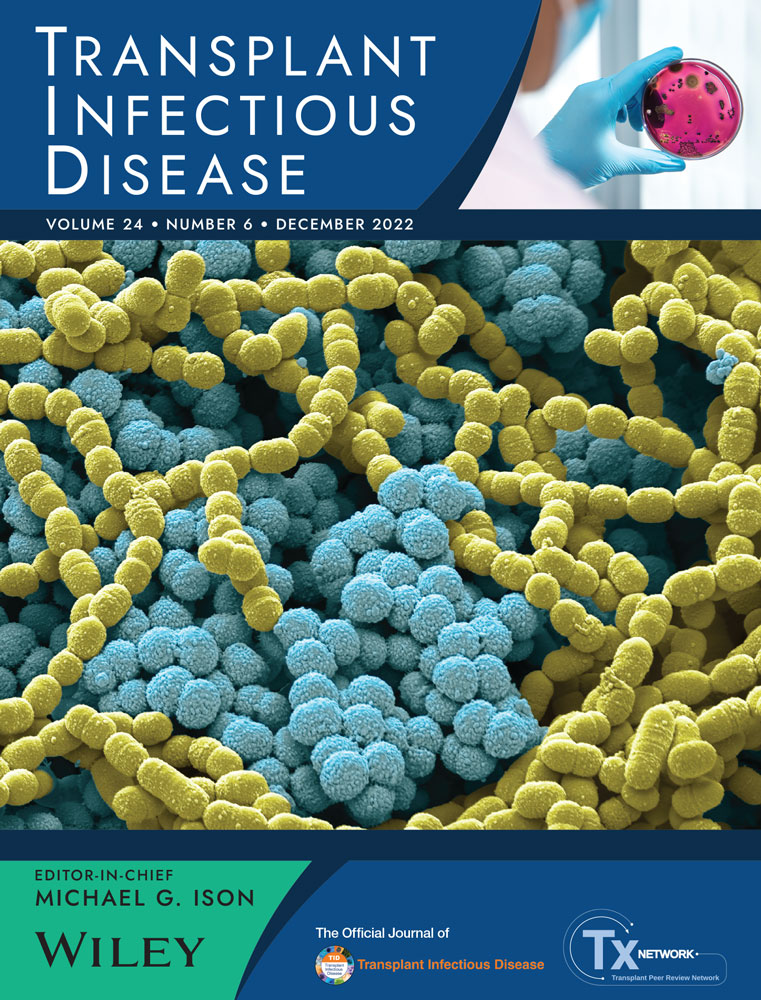Hyperammonemia syndrome post-lung transplantation: Case series and systematic review of literature
Abstract
Background
Hyperammonemia syndrome (HS) is a rare post-transplant complication associated with high morbidity and mortality. Its incidence appears to be higher in lung transplant recipients and its pathophysiology is not well understood. In addition to underlying metabolic abnormalities, it is postulated that HS may be associated with Ureaplasma or Mycoplasma spp. lung infections. Management of this condition is not standardized and may include preemptive antimicrobials, renal replacement, nitrogen scavenging, and bowel decontamination therapies, as well as dietary modifications.
Methods
In this case series, we describe seven HS cases, five of whom had metabolic deficiencies ruled out. In addition, a literature review was performed by searching PubMed following PRISMA-P guidelines. Articles containing the terms “hyperammonemia” and “lung” were reviewed from 1 January 1997 to 31 October 2021.
Results
All HS cases described in our center had positive airway samples for Mycoplasmataceae, neurologic abnormalities and high ammonia levels post-transplant. Mortality in our group (57%) was similar to that published in previous cases. The literature review supported that HS is an early complication post-transplant, associated with Ureaplasma spp. and Mycoplasma hominis infections and of worse prognosis in patients presenting cerebral edema and seizures.
Conclusion
CONFLICT OF INTEREST
The authors declare that they have no conflicts of interest.
Open Research
DATA AVAILABILITY STATEMENT
The datasets used and/or analyzed during the current study are available from the corresponding author on reasonable request.





